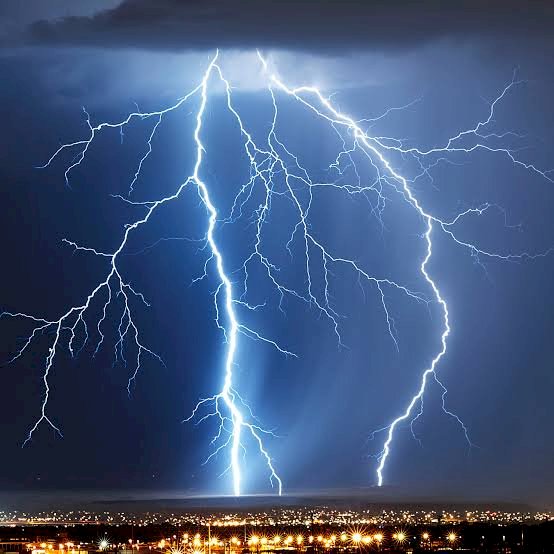The disaster of lightening
For Printing Download Epaper from files section from bottom of this page

With passing years, bizarre changes are seen in natural phenomena. One such natural phenomenon is lightening and it is now recorded that, lightening incidents have shown an increase of 23 percent in the year 2020. In rural areas, the effects of lightening are felt more severely as many people die because of striking of lightening. Mostly, people stay below a tree during the thundershowers and lightening strikes that particular tree. To understand the gravity of lightening disaster, as data is available which states that, between March 2020 and April 2021, 1697 people have been struck down by lightening. This figure is not small. According to experts, climate change is the reason for an increase in such incidents. They say that the scientific evidence is available to show that, climate change is sparking more lightening incidents. Climate change is responsible for changed behaviour of nature in recent past. There is an increase in incidents of cyclones especially on Arabian sea and bringing extreme rains in Indian continent. The scale of rains has been on increase due to global warming which is itself a manifestation of climate change. Earlier it was considered as in hilly areas, the number of lightening incidents occur more in number. But, it can’t be explained why lightening strikes are frequent in plain areas also. So, climate change is the most reliable reason. The data tells the same story. In 2020, India recorded a nearly 23% increase in lightning episodes compared to 2019, says a report by Earth Networks, a private firm specialising in weather intelligence data. The report, released on Monday, shows its network detected 39.55 million lightning pulses in India. Nearly 13.03 million were dangerous “cloud-to-ground” strikes, which make lives and property vulnerable. Thunderstorms accompanied by lightning strikes (usually in the pre-monsoon and monsoon months) are the single largest killers among natural disasters in India, according to the National Disaster Management Authority. This is grave because the toll lightening takes is more than actual rains or floods claim. Lightning strikes have killed at least 2,000 people every year in India since 2004, the India Meteorological Department (IMD) said in June. This data shows the seriousness of the disaster we are facing now. The increasing number of lighting-related episodes is now being linked to the climate crisis. This is because surface temperature and moisture levels have increased significantly in recent years. This may be attributed to global warming. The increasing moisture level provides favourable condition for the development of thunder clouds and collision of ice particles leads to charging and lightning strikes. As the frequency of incidents has increased to dangerous level, it is high time that, the states pass on the benefits of improved forecasting to the people, and install lightning arresters in rural areas. Odisha has reduced lightning deaths by installing arresters. Nobody has given serious attention to the deaths by lightening. With the number of victims raising to considerable level, it is high time that we should do something to lower the number of lightening incidents. The early warning messages must be in local languages and all communication mediums must be used. States should undertake lightning micro-zoning for regions, depending on their geography, to handle disaster and death risks better. With temperatures rising due to global warming, India is certain to see a spike in lightning mortalities in the future, and so states must put in place adequate systems and channels that disseminate information effectively to save lives and property. Not only lightening claims lives but also property. So, the disaster should be prevented by early warning system and it should be implemented now. We need to understand that, lightening is more serious problem than actual rains or floods.

 Active Times
Active Times 
















